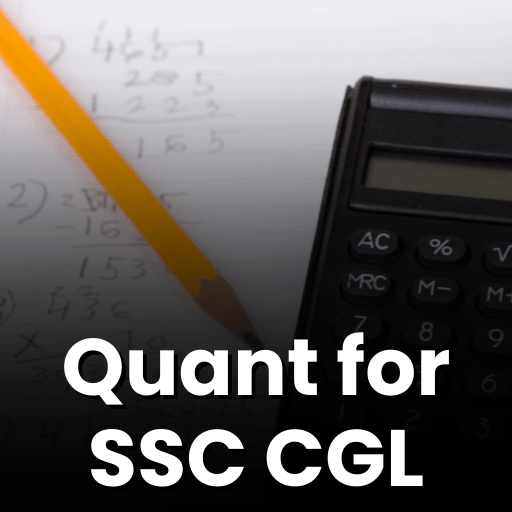Best Study Material for Mechanical Engineering Exam
Mechanical Engineering Exam > Mechanical Engineering Notes > Module 2 Mechanics of Machining Lesson 8 Machining forces and Merchant’s Circle Diagram (MCD)
Module 2 Mechanics of Machining Lesson 8 Machining forces and Merchant’s Circle Diagram (MCD) - Mechanical Engineering PDF Download
| Download, print and study this document offline |
Please wait while the PDF view is loading
Page 1
Module
2
Mechanics of
Machining
Version 2 ME IIT, Kharagpur
Page 2
Module
2
Mechanics of
Machining
Version 2 ME IIT, Kharagpur
Lesson
8
Machining forces and
Merchant’s Circle
Diagram (MCD)
Version 2 ME IIT, Kharagpur
Page 3
Module
2
Mechanics of
Machining
Version 2 ME IIT, Kharagpur
Lesson
8
Machining forces and
Merchant’s Circle
Diagram (MCD)
Version 2 ME IIT, Kharagpur
Instructional Objectives
At the end of this lesson, the student would be able to
(i) Ascertain the benefits and state the purposes of determining cutting
forces
(ii) Identify the cutting force components and conceive their
significance and role
(iii) Develop Merchant’s Circle Diagram and show the forces and their
relations
(iv) Illustrate advantageous use of Merchant’s Circle Diagram
(i) Benefit of knowing and purpose of determining cutting
forces.
The aspects of the cutting forces concerned :
• Magnitude of the cutting forces and their components
• Directions and locations of action of those forces
• Pattern of the forces : static and / or dynamic.
Knowing or determination of the cutting forces facilitate or are required for :
• Estimation of cutting power consumption, which also enables
selection of the power source(s) during design of the machine tools
• Structural design of the machine – fixture – tool system
• Evaluation of role of the various machining parameters ( process –
V
C
, s
o
, t, tool – material and geometry, environment – cutting fluid)
on cutting forces
• Study of behaviour and machinability characterisation of the work
materials
• Condition monitoring of the cutting tools and machine tools.
(ii) Cutting force components and their significances
The single point cutting tools being used for turning, shaping, planing, slotting,
boring etc. are characterised by having only one cutting force during
machining. But that force is resolved into two or three components for ease of
analysis and exploitation. Fig. 8.1 visualises how the single cutting force in
turning is resolved into three components along the three orthogonal
directions; X, Y and Z.
The resolution of the force components in turning can be more conveniently
understood from their display in 2-D as shown in Fig. 8.2.
Version 2 ME IIT, Kharagpur
Page 4
Module
2
Mechanics of
Machining
Version 2 ME IIT, Kharagpur
Lesson
8
Machining forces and
Merchant’s Circle
Diagram (MCD)
Version 2 ME IIT, Kharagpur
Instructional Objectives
At the end of this lesson, the student would be able to
(i) Ascertain the benefits and state the purposes of determining cutting
forces
(ii) Identify the cutting force components and conceive their
significance and role
(iii) Develop Merchant’s Circle Diagram and show the forces and their
relations
(iv) Illustrate advantageous use of Merchant’s Circle Diagram
(i) Benefit of knowing and purpose of determining cutting
forces.
The aspects of the cutting forces concerned :
• Magnitude of the cutting forces and their components
• Directions and locations of action of those forces
• Pattern of the forces : static and / or dynamic.
Knowing or determination of the cutting forces facilitate or are required for :
• Estimation of cutting power consumption, which also enables
selection of the power source(s) during design of the machine tools
• Structural design of the machine – fixture – tool system
• Evaluation of role of the various machining parameters ( process –
V
C
, s
o
, t, tool – material and geometry, environment – cutting fluid)
on cutting forces
• Study of behaviour and machinability characterisation of the work
materials
• Condition monitoring of the cutting tools and machine tools.
(ii) Cutting force components and their significances
The single point cutting tools being used for turning, shaping, planing, slotting,
boring etc. are characterised by having only one cutting force during
machining. But that force is resolved into two or three components for ease of
analysis and exploitation. Fig. 8.1 visualises how the single cutting force in
turning is resolved into three components along the three orthogonal
directions; X, Y and Z.
The resolution of the force components in turning can be more conveniently
understood from their display in 2-D as shown in Fig. 8.2.
Version 2 ME IIT, Kharagpur
R
P
X
P
Y
P
Z
Fig. 8.1 Cutting force R resolved into P
X
, P
Y
and P
Z
P
X
P
Y
P
XY
P
X
'
P
Y
'
P
Z
P
Z
'
P
XY
P
XY
'
Fig. 8.2 Turning force resolved into P
Z
, P
X
and P
Y
The resultant cutting force, R is resolved as,
Version 2 ME IIT, Kharagpur
Page 5
Module
2
Mechanics of
Machining
Version 2 ME IIT, Kharagpur
Lesson
8
Machining forces and
Merchant’s Circle
Diagram (MCD)
Version 2 ME IIT, Kharagpur
Instructional Objectives
At the end of this lesson, the student would be able to
(i) Ascertain the benefits and state the purposes of determining cutting
forces
(ii) Identify the cutting force components and conceive their
significance and role
(iii) Develop Merchant’s Circle Diagram and show the forces and their
relations
(iv) Illustrate advantageous use of Merchant’s Circle Diagram
(i) Benefit of knowing and purpose of determining cutting
forces.
The aspects of the cutting forces concerned :
• Magnitude of the cutting forces and their components
• Directions and locations of action of those forces
• Pattern of the forces : static and / or dynamic.
Knowing or determination of the cutting forces facilitate or are required for :
• Estimation of cutting power consumption, which also enables
selection of the power source(s) during design of the machine tools
• Structural design of the machine – fixture – tool system
• Evaluation of role of the various machining parameters ( process –
V
C
, s
o
, t, tool – material and geometry, environment – cutting fluid)
on cutting forces
• Study of behaviour and machinability characterisation of the work
materials
• Condition monitoring of the cutting tools and machine tools.
(ii) Cutting force components and their significances
The single point cutting tools being used for turning, shaping, planing, slotting,
boring etc. are characterised by having only one cutting force during
machining. But that force is resolved into two or three components for ease of
analysis and exploitation. Fig. 8.1 visualises how the single cutting force in
turning is resolved into three components along the three orthogonal
directions; X, Y and Z.
The resolution of the force components in turning can be more conveniently
understood from their display in 2-D as shown in Fig. 8.2.
Version 2 ME IIT, Kharagpur
R
P
X
P
Y
P
Z
Fig. 8.1 Cutting force R resolved into P
X
, P
Y
and P
Z
P
X
P
Y
P
XY
P
X
'
P
Y
'
P
Z
P
Z
'
P
XY
P
XY
'
Fig. 8.2 Turning force resolved into P
Z
, P
X
and P
Y
The resultant cutting force, R is resolved as,
Version 2 ME IIT, Kharagpur
XY
Z
P P R + = (8.1)
and Y X XY P P P + = (8.2)
where, P
X
= P
XY
sin f and P
Y
= P
XY
cos f (8.3)
where, P
Z
= tangential component taken in the direction of Z
m
axis
P
X
= axial component taken in the direction of longitudinal
feed or X
m
axis
P
Y
= radial or transverse component taken along Y
m
axis.
In Fig. 8.1 and Fig. 8.2 the force components are shown to be acting on the
tool. A similar set of forces also act on the job at the cutting point but in
opposite directions as indicated by P
Z
', P
XY
', P
X
' and P
Y
' in Fig. 8.2
Significance of P
Z
, P
X
and P
Y
P
Z
: called the main or major component as it is the largest in magnitude.
It is also called power component as it being acting along and being
multiplied by V
C
decides cutting power (P
Z
.V
C
) consumption.
P
y
: may not be that large in magnitude but is responsible for causing
dimensional inaccuracy and vibration.
P
X
: It, even if larger than P
Y
, is least harmful and hence least significant.
Cutting forces in drilling
In a drill there are two main cutting edges and a small chisel edge at the
centre as shown in Fig. 8.3.
The force components that develop (Fig. 8.3) during drilling operation are :
• a pair of tangential forces, P
T1
and P
T2
(equivalent to P
Z
in turning)
at the main cutting edges
• axial forces P
X1
and P
X2
acting in the same direction
• a pair of identical radial force components, P
Y1
and P
Y2
• one additional axial force, P
Xe
at the chisel edge which also
removes material at the centre and under more stringent condition.
P
T1
and P
T2
produce the torque, T and causes power consumption P
C
as,
T = P
T
x ½ (D) (8.3)
and P
C
= 2 pTN (8.4)
where, D = diameter of the drill
and N = speed of the drill in rpm.
The total axial force P
XT
which is normally very large in drilling, is provided by
P
XT
= P
X1
+ P
X2
+ P
Xe
(8.5)
But there is no radial or transverse force as P
Y1
and P
Y2
, being in opposite
direction, nullify each other if the tool geometry is perfectly symmetrical.
Version 2 ME IIT, Kharagpur
Read More
FAQs on Module 2 Mechanics of Machining Lesson 8 Machining forces and Merchant’s Circle Diagram (MCD) - Mechanical Engineering
| 1. What are machining forces and how do they impact the machining process? |  |
| 2. How can machining forces be calculated or measured? |  |
Machining forces can be calculated using various methods, including analytical models, empirical formulas, and numerical simulations. Analytical models involve mathematical equations based on the cutting parameters, tool geometry, and material properties. Empirical formulas are derived from experimental data and provide approximate values of machining forces. Numerical simulations, such as finite element analysis, use computational methods to simulate the cutting process and predict the forces. Additionally, machining forces can also be directly measured using force sensors or dynamometers during actual machining operations.
| 3. What is Merchant's Circle Diagram (MCD) and how is it used in machining? |  |
Merchant's Circle Diagram (MCD) is a graphical representation of the cutting forces acting on a single-point cutting tool during machining. It is used to analyze and understand the relationship between the cutting speed, feed rate, and the forces involved in the machining process. The MCD consists of a circle divided into quadrants, representing different combinations of cutting speed and feed rate. By plotting the cutting force and feed force components on the MCD, engineers can determine the resultant force and its direction, as well as identify the conditions for minimum cutting force or power consumption.
| 4. How does the Merchant's Circle Diagram help in optimizing machining processes? |  |
The Merchant's Circle Diagram helps in optimizing machining processes by providing valuable insights into the cutting forces and their effects. By analyzing the MCD, engineers can identify the conditions that lead to minimum cutting forces, which can help in reducing tool wear and prolonging tool life. Additionally, the MCD can also aid in optimizing machining parameters, such as cutting speed and feed rate, to achieve the desired surface finish and dimensional accuracy. By understanding the relationship between the cutting forces and process variables, manufacturers can improve the overall efficiency and productivity of the machining operation.
| 5. Are there any limitations or drawbacks of using the Merchant's Circle Diagram? |  |
While the Merchant's Circle Diagram is a useful tool for analyzing machining forces, it does have some limitations. Firstly, the MCD assumes ideal cutting conditions and may not accurately represent the actual forces in complex machining operations or with unconventional tool geometries. Additionally, the MCD is limited to single-point cutting tools and may not be applicable to other types of cutting tools, such as drills or milling cutters. Furthermore, the MCD does not consider factors like tool wear, temperature, or material properties, which can also influence the machining forces. Therefore, it is important to complement the MCD analysis with other methods and experimental data for a comprehensive understanding of the machining forces.
Download as PDF
Top Courses for Mechanical Engineering
Related Searches




























